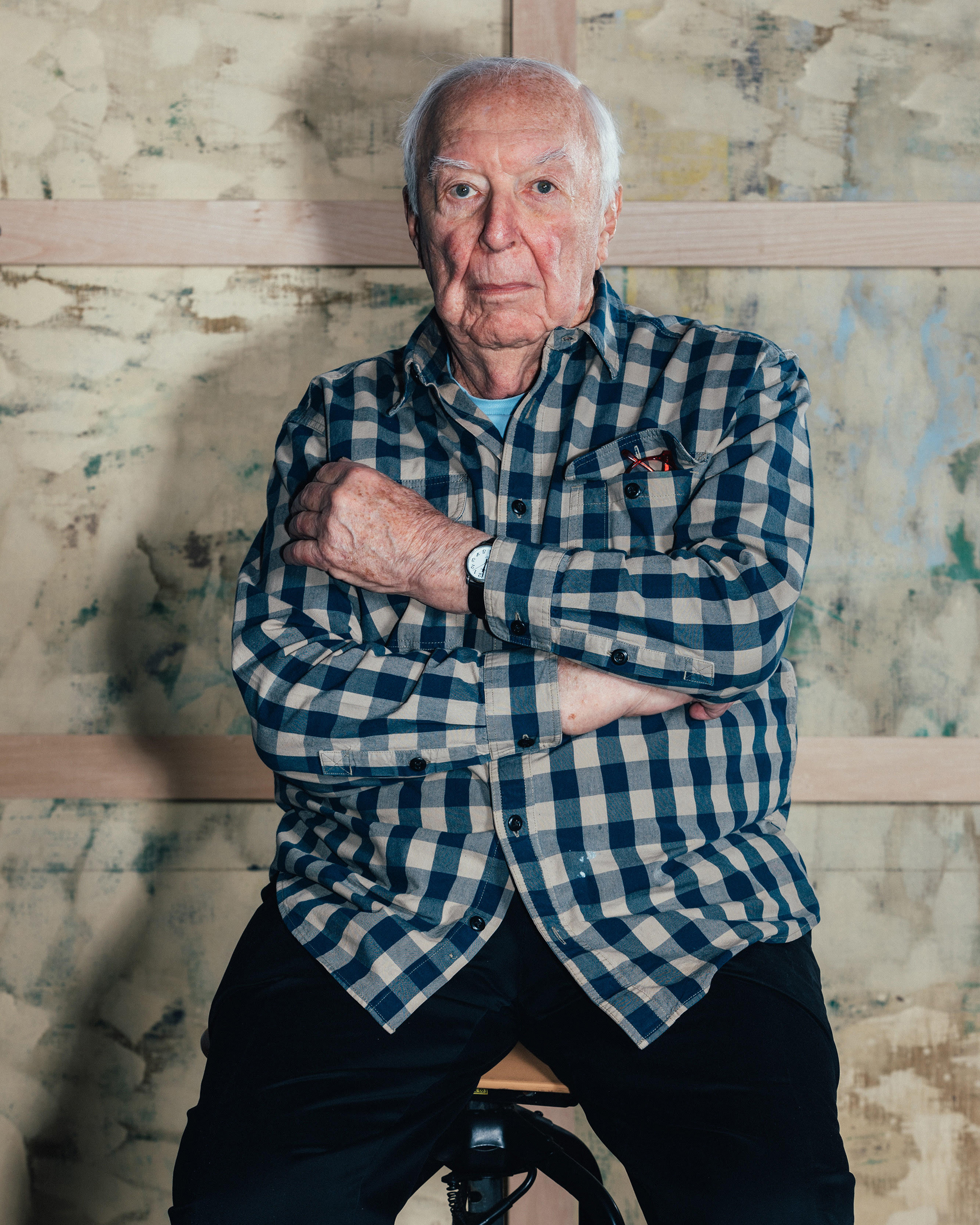
Jasper Johns, possibly America’s most famous living artist and still plying his trade at 91, launches two retrospectives on Sept. 29; one at the Whitney Museum of American Art in New York City and the other at the Philadelphia Museum of Art. The exhibitions, known collectively as Mind/Mirror, illuminate the through lines of Johns’ large body of work: his fascination with such everyday symbols as numbers, targets, maps and flags; his sometime habit of limiting his color palette to red, blue, yellow and orange; and his exploration of such techniques as collage, hatching and scale. One section of the Whitney is dedicated to his variations on the motif of a Savarin coffee can crammed with brushes, which is widely believed to be the artist’s way of representing himself. Johns, who famously destroyed all his prior work before painting his first flag, lives in Connecticut and rarely gives interviews. He answered questions from TIME via email.
The retrospectives at the Whitney and in Philadelphia are called Mind/Mirror. For you, is art more a way of representing thought, or a way of representing what you see?
I don’t know about more or less. I think it is both and a play between them.
Do you miss anything about being young?
Agility.
What would constitute a perfect day for you?
Few interruptions.
You’ve had friends who were poets and you’ve been interested in the overlap between poetry and art. Do you still read poetry?
I do still read poetry, old and new. I read The Poetry Project’s newsletter when time allows. Friends sometimes email their poems or send copies of recently published books.
One of your friends, the poet Frank O’Hara, wrote that he was “sentimental enough to wish to contribute something to life’s fabric, to the world’s beauty.” Do you feel confident you have done that?
It’s not what I set out to do, but I suppose the possibility that it might be a consequence is a nice thought.
For what in your life do you feel most grateful?
I am lucky for being able to devote myself to work that remains interesting to me.
You have spoken of how many of your works start with “things the mind already knows,” —numbers, colors, targets, flags. Did any of these things start to become unfamiliar?
All familiar things can open into strange worlds.
Would any flag have worked? The Union Jack? The Japanese sun?
My first Flag painting followed a dream of an American flag so that is what I painted.
You have returned in several works to a LIFE photograph by Larry Burrows of a soldier devastated by the death of a fellow soldier. It’s not his most famous image; why did that one speak to you?
I was not familiar with Burrows’ work. The photograph itself seemed to ask for my attention.
A few years later, Burrows died while on assignment in Laos. Is image-making worth dying for?
Dying while on assignment doesn’t seem like a bad idea.
Can any images—as mundane as a coffee can or dramatic as a mourning soldier—still have power in a world so suffused by imagery and information?
Visual information remains a primary source of meaning.
To what do you attribute your long creative life?
One does not plan the length of one’s life, so I might attribute it to chance.
Do you wonder what the last work you make will be?
I sometimes think it is the one I am working on.
Your work is sometimes regarded as chilly or detached. Do you understand that perception?
No.
Robert Rauschenberg said that “Good art can never be understood.” Do you agree?
Not with the language. I don’t know that art can be understood in any final way, but a search for understanding tends to open one’s eyes rather than close them.
More Must-Reads from TIME
- Introducing the 2024 TIME100 Next
- The Reinvention of J.D. Vance
- How to Survive Election Season Without Losing Your Mind
- Welcome to the Golden Age of Scams
- Did the Pandemic Break Our Brains?
- The Many Lives of Jack Antonoff
- 33 True Crime Documentaries That Shaped the Genre
- Why Gut Health Issues Are More Common in Women
Contact us at letters@time.com